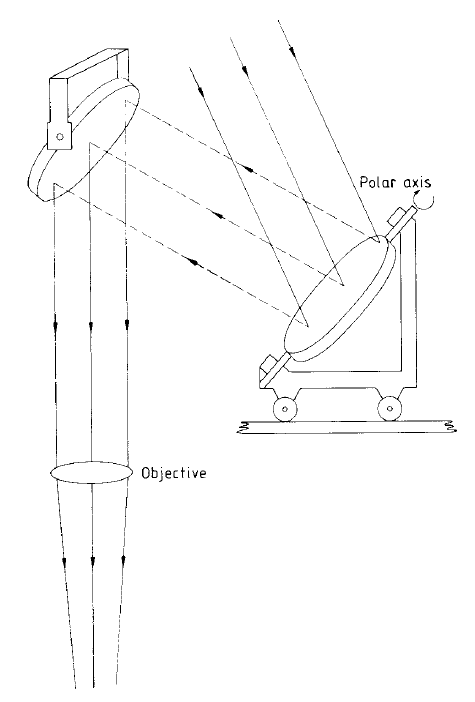
تاريخ الفيزياء

علماء الفيزياء


الفيزياء الكلاسيكية

الميكانيك

الديناميكا الحرارية


الكهربائية والمغناطيسية

الكهربائية

المغناطيسية

الكهرومغناطيسية


علم البصريات

تاريخ علم البصريات

الضوء

مواضيع عامة في علم البصريات

الصوت


الفيزياء الحديثة


النظرية النسبية

النظرية النسبية الخاصة

النظرية النسبية العامة

مواضيع عامة في النظرية النسبية

ميكانيكا الكم

الفيزياء الذرية

الفيزياء الجزيئية


الفيزياء النووية

مواضيع عامة في الفيزياء النووية

النشاط الاشعاعي


فيزياء الحالة الصلبة

الموصلات

أشباه الموصلات

العوازل

مواضيع عامة في الفيزياء الصلبة

فيزياء الجوامد


الليزر

أنواع الليزر

بعض تطبيقات الليزر

مواضيع عامة في الليزر


علم الفلك

تاريخ وعلماء علم الفلك

الثقوب السوداء


المجموعة الشمسية

الشمس

كوكب عطارد

كوكب الزهرة

كوكب الأرض

كوكب المريخ

كوكب المشتري

كوكب زحل

كوكب أورانوس

كوكب نبتون

كوكب بلوتو

القمر

كواكب ومواضيع اخرى

مواضيع عامة في علم الفلك

النجوم

البلازما

الألكترونيات

خواص المادة


الطاقة البديلة

الطاقة الشمسية

مواضيع عامة في الطاقة البديلة

المد والجزر

فيزياء الجسيمات


الفيزياء والعلوم الأخرى

الفيزياء الكيميائية

الفيزياء الرياضية

الفيزياء الحيوية

الفيزياء العامة


مواضيع عامة في الفيزياء

تجارب فيزيائية

مصطلحات وتعاريف فيزيائية

وحدات القياس الفيزيائية

طرائف الفيزياء

مواضيع اخرى
The coelostat
المؤلف:
A. Roy, D. Clarke
المصدر:
Astronomy - Principles and Practice 4th ed
الجزء والصفحة:
p 347
29-8-2020
3194
The coelostat
The coelostat is a special collector system, usually applied to solar observations, providing an image which is fixed in space. Such a system allows heavy subsidiary analysing equipment to be used. Most coelostat systems are placed at the top of a tower with the analysing equipment below the level of the ground where it is more easily stabilized against temperature fluctuations. The positioning of the coelostat at a height above the ground is optimum in obtaining the best seeing conditions and the collected radiation’s path to the analysing equipment can be made virtually free from disturbing air currents by enclosing it in a thermally insulated tube.
The collecting system consists of two circular flat mirrors as illustrated in figure 1. The first mirror is set in a cradle so that the polar axis is parallel to and passes through the centre of the front reflecting face. The second plane mirror reflects the beam into some imaging device, such as a longfocus objective, although, in some systems, reflection optics are used throughout. Rotation of the first mirror about the polar axis, at a rate equal to half the rotational speed of the Earth, allows celestial objects to be followed.
The range of declinations is achieved by adjustment of the relative positions of the two mirrors. As in the case of a solar tower, the image-forming optics are in a fixed position and, consequently, the movement of the second mirror of the coelostat can only allow adjustment by tilt. The first mirror and its drive are placed on a carriage which can be positioned along the north–south line. For each declination setting, the position of this carriage and the tilt at the second mirror need to be adjusted. In order to overcome the problem of the second mirror blocking-off some parts of the sky from the view of the first mirror, two sets of runners are usually provided for the carriage which holds the first mirror. These runners lie on either side of the meridian which passes through the second mirror. For solar observations, it is easy to visualize that the runners on the east side would be chosen to hold the carriage for pre-transit (morning) observations and that the carriage would be moved to the runners on the west side for post-transit (afternoon) observations.
There are also two other collector systems which are sometimes used to provide a solar image. These are the heliostat and the siderostat. The heliostat has the disadvantage that, although the centre of the solar image is kept in a fixed position, the image rotates slowly. A siderostat is basically a singlemirrored system but the driving mechanism required to achieve a stationary image is complicated.
The McMath solar telescope, which is a heliostat design, is shown in figure 2. The mirror has a diameter of 1·5 m and the system provides a solar image 80 cm across.

Figure 1. A simple coelostat.

Figure 2. The McMath Pierce solar telescope, Kitt Peak National Observatory, Arizona. (NOAO/AURA/NSF.)
 الاكثر قراءة في مواضيع عامة في علم الفلك
الاكثر قراءة في مواضيع عامة في علم الفلك
 اخر الاخبار
اخر الاخبار
اخبار العتبة العباسية المقدسة

الآخبار الصحية















 قسم الشؤون الفكرية يصدر كتاباً يوثق تاريخ السدانة في العتبة العباسية المقدسة
قسم الشؤون الفكرية يصدر كتاباً يوثق تاريخ السدانة في العتبة العباسية المقدسة "المهمة".. إصدار قصصي يوثّق القصص الفائزة في مسابقة فتوى الدفاع المقدسة للقصة القصيرة
"المهمة".. إصدار قصصي يوثّق القصص الفائزة في مسابقة فتوى الدفاع المقدسة للقصة القصيرة (نوافذ).. إصدار أدبي يوثق القصص الفائزة في مسابقة الإمام العسكري (عليه السلام)
(نوافذ).. إصدار أدبي يوثق القصص الفائزة في مسابقة الإمام العسكري (عليه السلام)


















